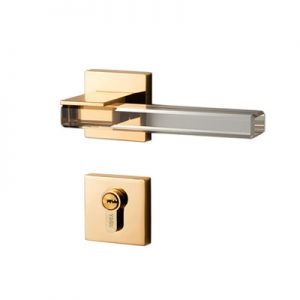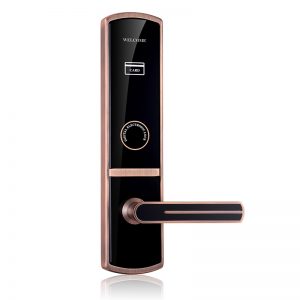The anatomy of a door lock consists of several components that work together to secure a door and provide controlled access. Here’s a breakdown of the key components:
- Cylinder: The cylinder is the core of the lock where the key is inserted. It contains the locking mechanism and tumblers that align with the cuts on the key to allow the lock to turn and unlock.
- Keyway: The keyway is the slot or opening in the cylinder where the key is inserted. It guides the key into the correct position to interact with the lock’s internal components.
- Key Pins: Inside the cylinder, key pins are small cylindrical components that rest on different levels. When the correct key is inserted, its ridges lift the key pins to align with the shear line, allowing the cylinder to turn.
- Driver Pins: Driver pins sit directly above the key pins. They are of varying lengths and rest at the shear line. When the correct key is inserted, the driver pins are pushed up, allowing the cylinder to turn.
- Springs: Springs push the key pins and driver pins downward, creating tension between the pins and the cylinder. This tension is released when the correct key is inserted, lifting the pins to the shear line.
- Shear Line: The shear line is the point at which the key pins and driver pins align when the correct key is inserted. This alignment allows the cylinder to turn and the lock to open.
- Plug: The plug is the part of the cylinder that turns when the correct key is inserted and turned. It is connected to the locking mechanism and is responsible for unlocking the door.
- Cam: The cam is a rotating piece connected to the plug. It interacts with the latch or bolt mechanism to open or close the door when the lock is turned.
- Bolt or Latch: This is the part of the lock that extends into the door frame or strike plate to secure the door. When the lock is turned, the bolt retracts, allowing the door to open.
- Strike Plate: The strike plate is a metal plate attached to the door frame. When the door is closed and the bolt or latch extends, it fits into a hole in the strike plate, securing the door.
- Faceplate: The faceplate is a metal plate that surrounds the latch or bolt on the edge of the door. It provides additional reinforcement and protection for the locking mechanism.
- Escutcheon or Rosette: This decorative plate surrounds the cylinder on the outside of the door. It can have various designs and finishes, adding to the door’s aesthetics.
- Thumbturn: Some locks, especially deadbolt locks, have a thumbturn on the inside that allows you to lock or unlock the door without a key. This is especially useful for quick exits in case of emergencies.
Understanding the anatomy of a door lock helps you appreciate how the components work together to provide security and controlled access to your space. It’s important to choose high-quality locks with well-designed components to ensure reliable security for your home or property.








